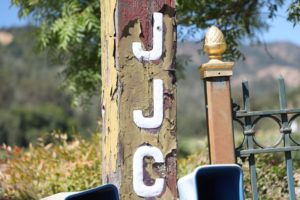
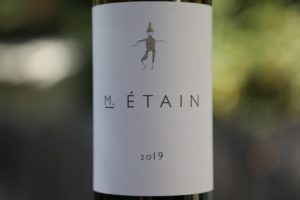
 Scarecrow was founded in 2003 (inaugural vintage) by artists Bret Lopez and Mimi DeBlasio. But the story begins with Judge Joseph Cohn, Bret’s grandfather. Cohn was born in Harlem in 1895; his family was very poor. Lopez remembers visiting his grandparents at their home for dinner and wondering why his grandfather always had two loaves of bread in the kitchen, one sliced and one not. He asked his mother; she said Cohn’s family couldn’t afford fresh bread during his childhood, so having two loaves of bread on hand was both a reminder of his past but also an indication he was no longer poor.
Scarecrow was founded in 2003 (inaugural vintage) by artists Bret Lopez and Mimi DeBlasio. But the story begins with Judge Joseph Cohn, Bret’s grandfather. Cohn was born in Harlem in 1895; his family was very poor. Lopez remembers visiting his grandparents at their home for dinner and wondering why his grandfather always had two loaves of bread in the kitchen, one sliced and one not. He asked his mother; she said Cohn’s family couldn’t afford fresh bread during his childhood, so having two loaves of bread on hand was both a reminder of his past but also an indication he was no longer poor.
A simple ad offering his services would change the course of Cohn’s family history and generations to come. He took out an ad in 1915 in a local newspaper mentioning he was a hard worker and was good with numbers. He was hired as a stenographer at Fox Film Co, a company started by theatre chain owner William Fox in 1904.
It is worth noting that some of Los Angeles’s pioneer film companies were started on the east coast of the U.S., primarily in New City. And the men that founded these companies often had Russian heritage. Contemporaries or colleagues of Cohn included Nicholas Schenck who along with his brother George Schenck were in business with Marcus Loew. For reference, Loew created Loew’s Theatres in 1904 and co-founded with Louis B. Mayer and Samuel Goldwyn, Metro-Goldwyn-Mayer film studio (MGM) in 1924. And Irving Thalberg, a film producer who was head of production at MGM.
At age 21 Cohn was Junior Head of Production at MGM and by his late twenties was their Head of Production, a role he kept until retiring in 1968. Part of his responsibilities was ensuring films were produced on or under budget. Bret remembers that Cohn didn’t initially tell his parents (Russian and Orthodox Jews) the details of his work, rather he simply mentioned he had a good job in California.
At the Culver City MGM studios, a special filming location was referred to as Cohn Lake with an island containing cameras for shots that needed to be over water. The set included numerous structures representing various eras in history. While not always credited directly in films, Cohn’s name was used during the filming of the first Tarzan movie, Tarzan the Ape Man in 1932. According to Lopez, in that film, the bad guys were referred to as zimbalis in reference to actor Efrem Zimbalist and the good guys were called Joecohnes, in a nod to Cohn.
J.J. Cohn was part of Hollywood’s golden era having co-founded the Academy of Motion Arts and Pictures in 1927 and was an executive producer at MGM from 1936-1956. He was an integral part of the making of numerous films including Ben Hur, the most expensive film created by Hollywood up until that point, Gigi, Mutiny on the Bounty and one of the most iconic films ever made, The Wizard of Oz based on author Frank L. Baum’s 1900 novel The Wonderful Wizard of Oz, penned in 1900. This was his first book of 14 and is where the character Scarecrow was initially introduced. An additional 26 books were written in the Oz series by five more authors including Ruth Plumly Thompson. The entire collection is sometimes referred to as the ‘Famous Forty’.
Cohn spent time in Mexico in regards to several films including Blood and Sand from 1941, a film about bull fighting. He was given a budget to go to Mexico and organize pre filming locations and other logistics. He discovered there were four primary ranches who sold the bulls to the various venues. He contacted each of those ranches and purchased the bulls in September just before production began in October. He had cornered the market on bulls and then sold the bulls for a profit before they even began shooting the film. He was a smart businessman.
Bret recalls hearing his grandfather never drove the same route to his work at the studio, preferring to vary his drive so he could scout local streets for location shoots and or other props. He was a man of style, charisma and curiosity and he had the ability and the resources to make someone a movie star.
One evening he was attending a VIP party and he spotted a woman receiving attention from a variety of other attendees. Cohn turned to his companion and asked, “who is that”. He was told to, “forget that woman, she is in a different class”. Turns out she was Miss Bessie Cook, whose family were successful dairy farmers in New Jersey. He introduced himself to her at the party and they soon began dating. She didn’t want to be a movie star and she wasn’t interested in his money.
She also had a son from a previous relationship with an ambassador of Ecuador. His name was Bobby Lopez. After she and Cohn married they approached the young boy about changing his last name to Cohn. But he was not interested. Bobby was Bret’s father and also a photographer.
In the 1930s, Cohn received a phone call about a stock that needed to be purchased immediately; it was insider information about Bank of America. After arriving to his office he asked his secretary to reference how much money he had in cash. It wasn’t much, so on his lunch break he visited a nearby Bank of America branch. He arrived and asked for the branch manager and then asked if he could borrow $20,000, a significant sum of money in those days.
The manager looked at him and according to Lopez, said something like, “I don’t care who you are, I won’t give you any money – you could walk in here with Amadeo Giannini (AP) himself and I still wouldn’t loan you the money”. Giannini was the founder of Bank of Italy which later became Bank of America. So Cohn returned to the studio and entered Irving Thalberg’s office and began ranting about the experience he just had at the Bank of America branch. Thalberg started motioning to Cohn to stop talking. Giannini himself was in a meeting with Thalburg, with his back to Cohn. When he heard of Cohn’s predicament he mentioned he could probably resolve the situation. He did; both men visited that particular Bank of America branch again and Cohn received his loan.
Bessie enjoyed Hollywood including the social aspects of meeting a diverse group of accomplished individuals including the Duke and Duchess of Windsor, Elsa Schiaparelli, Coco Chanel and Albert Einstein. But she nostalgically recalled her time with family in the Hamptons on Long Island. She asked her husband if there was an equivalent place in California they could go to relax and escape Los Angles. He told her he would ask around.
One of the men he asked was Giannani who recommended Napa Valley and told Cohn he had just purchased a home in the region. He also mentioned that a relaxing way to get to the property from Los Angeles was to board sleeper car at Union Station and take the overnight train to Napa Valley with a convenient stop in Rutherford at Niebaum Lane.
Cohn began looking for property and located a historic piece of land nestled against the lower foothills of the Mayacamas mountains in Rutherford. He discovered a property that was previously owned by Serranus Clinton Hastings. Hastings built a wooden home on site in 1875; later additional rooms were added. The property was not planted to wine grapes, rather it was a sizable prune orchard. Prunes were once an important crop in Napa Valley, evidenced by the number of drying sheds and packhouses in the region at that time.
Lopez recalls meeting someone in Napa Valley years ago who knew his grandfather. He told the story of Cohn’s butler standing on the station platform at Niebaum Lane with two scotches and a soda in time for the arriving train.
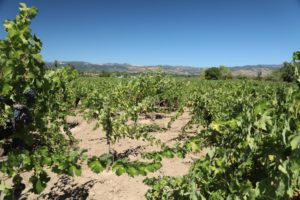
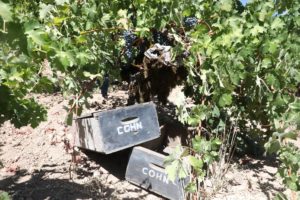
 The J.J. Cohn estate is deeply rooted in the fabric of Napa Valley’s viticulture history; Cohn purchased 180 acres in 1943. Several deeds from that era to Cohn were listed in local newspapers including from Bank of America and Martin Snelling Jr.; this latter transaction was identified as ‘mining property’ referring to the Oakville Quick Silver Mine. This was during the middle of World War II; a committee had been formed to ration farm equipment. In July of that year, a mention in the Napa Journal indicated J.J. Cohn was approved for a single disc harrow. Rations were tight in those years.
The J.J. Cohn estate is deeply rooted in the fabric of Napa Valley’s viticulture history; Cohn purchased 180 acres in 1943. Several deeds from that era to Cohn were listed in local newspapers including from Bank of America and Martin Snelling Jr.; this latter transaction was identified as ‘mining property’ referring to the Oakville Quick Silver Mine. This was during the middle of World War II; a committee had been formed to ration farm equipment. In July of that year, a mention in the Napa Journal indicated J.J. Cohn was approved for a single disc harrow. Rations were tight in those years.
The J.J. Cohn Estate borders Inglenook Estate, an iconic property founded by Gustave Niebaum. Niebaum’s nephew, John Daniel took over the Inglenook Estate in 1939; in 1945 Daniel convinced Cohn to plant 80 acres of Cabernet Sauvignon on his 180 acre property with the agreement that Daniel would purchase the grapes once the vines came of bearing age. Daniel’s acreage was mostly planted to vines; he wanted to expand Inglenook’s production. He proposed removing the prune orchard, suggested that his crew would pick the grapes and he would pay Cohn the going rate at that time for the yields. And to sweeten the deal, he would give Cohn bottles of wine. It was an offer Cohn couldn’t refuse. The grapes were planted on phylloxera resistant St. George rootstock.
Cohn’s grapes were a prominent part of Inglenook’s storied wines in the 1950s and early 1960s prior to their sale to United Vintners in 1964. Grapes from the Scarecrow estate historically were sold to some of Napa Valley’s finest old guard including Inglenook, Beaulieu Vineyard for their Private Georges de Latour bottling, Robert Mondavi Winery for their Reserve Cabernet Sauvignon and were including in the Opus One bottlings from 1979 through 2022. Grapes from the property were also used by Etude who bottled a wine with the designate, Morisoli & Cohn Ranches on the label, Joseph Phelps for their Insignia and Lail Vineyards.
Bret used to visit the property as a child; he remembers a Swedish couple living in the house at one point – the husband was the head gardener at Beaulieu Vineyards. Bret’s grandmother saw the property and realized it needed some upkeep. She put herself in charge of the interior decor. Brett remembers hearing she spent 9 months shopping including acquiring a number of movie props from the studios. She had everything loaded into several 18-wheelers who caravanned from Los Angeles to the property. Her design instincts were so finely tuned that she had the furniture placed exactly where she wanted it, within a span of only several hours.
When Cohn was in his mid 90s, Bret offered to come up and help fix up the property. And he asked him what he was going to do with the property after he passed. Cohn’s answer was that he was going to sell the property and divide the proceeds among his children. That shocked Brett; time spent at special properties during one’s formative years become a part of one’s being and trigger strong emotional connections, regardless of ones age. Brett asked him if he would change his mind; the answer was no.
When Cohn turned 99, the family decided to have a meeting in regard to his estate. He told Bret he was proud of grandson’s career; Bret realized he didn’t want to gift the property to his family because he was a self-made man and wanted to make sure his grand children made their own way in life.
Mimi told Bret that she would talk to Cohen; Brett retreated to the back yard. After 10 minutes Mimi walked out; Bret thought for sure she was going to convey the same message. However, Mimi said he changed his mind and would gift the estate to his family. This was a seminal moment as Cohn died in Beverly Hills at age 100 six months later, the same year that another Hollywood icon, George Burns celebrated his 100th birthday. Cohn is buried at Forest Lawn Cemetery in Glendale; incidentally this is the same cemetery that our great great grandfather is buried in.
—
Bret and his two sisters took over ownership of the property. After one sister died, Bret offered to buy the property from his other sister. She agreed but said they needed to list the property on the open market. The property was appraised at 5 million. But Bret discovered additional information; he spoke to the person who was brokering the grapes each year and was told the grapes were special, and that there were buyers in the valley who knew this. He advised that when the property was put on the market, the bids would most likely increase far above the asking price; he estimated perhaps as high as 15 million. He recommended Lopez find a business partner. Bret recalls after the property was listed for sale, people started showing up at the property unannounced. Bret met with numerous potential partners but did not immediately find the right fit. A friend, Leonora Particelli mentioned that perhaps Lopez’s neighbor, Francis Ford Coppola might be interested as Inglenook was already purchasing grapes from the Cohn estate.
So he invited Coppola over for lunch; they sat out on his porch and discussed the property. Then they walked over to the reservoir; Coppola agreed that interested parties would most likely far bid up the price. Lopez had mentioned 15 million as a possible bid; with nothing more than a handshake, Coppola offered to bid on the property as soon as it went on the market.
Lopez knew Geraldine Wyle from his youth; she was now an estate attorney managing high profile clients. He enlisted her help with the sale of the property. Almost immediately 8 bids came in at 15 million each. The price kept increasing during subsequent rounds. And two of the final bidders were grape grower Andy Beckstoffer and the Rothschild family from France – no surprise considering their long term relationship with the vineyard through Opus One. Ultimately the property sold for $33.6 million in a package deal to Lopez and Coppola. Coppola received 140 acres while Bret and Mimi received 25 acres including the block of the oldest vines.
On the day the property sold, Mimi received a call from a friend in Minnesota. Her friend was exercising on a Stairmaster and watching CNBC on the television when she spotted a ticker scrolling across the bottom of the screen announcing that the highest ever price per acre for agricultural land had just been transacted at a vineyard in Napa Valley. She called Bret; he called Geraldine. Geraldine broke down in tears and told Lopez this was the biggest success of her career. She called it, “the impossible win”.
Neighbor, Gary Morisoli whose family roots in Napa Valley go back to 1903 was managing this property at the time. He recognized the choicest part of the property was located east of and near the old house. Lopez invited Morisoli over for brunch and admitted he knew next to nothing about the wine business; Gary asked how he could help with the property. It was decided that Gary would oversee the management of the vines, certainly an easy commute from his own property; he did so for 2003.
Lopez and DeBlasio moved here full time in 2002; at the time, the grapes were in year to year contracts, a conscious and smart decision by Cohn, recognizing his advanced age. The contracts were soon cancelled and grapes from the estate were used exclusively for the Scarecrow wine.
After the sale, an inner voice spoke to Bret reminding him of the significant cost of annual property taxes. He found out what the property had made the previous year from selling grapes; it was about $50,000. That would not cover property taxes. It was suggested by others that he make his own wine – with a reminder that they would be able to charge a premium for their wines based on the pedigree of their vineyard.
Bret asked a friend how he should proceed with making wine. The answer was, get a winemaker. He didn’t know any winemakers. His friend then asked if Bret knew any sommeliers. He remembered Scott Tracy who was working at La Toque Restaurant in Yountville at the time. So he paid a visit to La Toque and met with Tracy and informed him, “Scott, I need a winemaker”. Tracy’s reply was, “are you making red or white wines”. The answer was red. Tracy provided Lopez with 10 winemakers and their personal phone numbers, indicating they were the best winemakers in Napa Valley.
Lopez called and met all of them. The last person on his list was Celia Welch (whose last name at the time was Masyczek). She asked him how he got her number; he told her Scott gave it to him and said she was one of the best winemakers in Napa Valley. That got her attention.
So he continued his pitch; he mentioned he had just inherited a vineyard. She broke in and told him she has eight clients, and she didn’t have the bandwidth to take on another client. She said, “the only way I would take on another client is if someone fired me or I let a client go”. She asked who else he had met with. Lopez rattled off the names on his list and Celia then asked how many had agreed to be his winemaker. He said every single one had agreed. That also caught her attention. She said, “wait a minute, what is the name of your estate?” He quickly said, “J.J. Cohn”. The phone went dead. Lopez said, “hello?” and then “hello, hello” again. And he told Mimi, “I think she hung up on me”.
But then Celia spoke, “you own the J.J. Cohn estate”, your the man with the magic grapes: for you, I will drop a client.” And then she told Lopez she had made wine for one of her clients from grapes from his property and asked him if he would like to try this wine at Laird Estate where it was being made.
Bret’s early introduction to wine was a cheap wine at age 14. Before Bret even tried the barrel sample Celia offered him, he asked himself, “what is that amazing smell, as he didn’t immediately associate the aromas coming from the wine. He took a sip and had a significant spiritual experience, “like a warm glow all over, but without any accompanying music from heaven”, as he describes the feeling. And so he turned to Celia and said, “you did this with our grapes?”. Her reply was that those grapes were not even the best from his property.
Her initial involvement was another handshake deal. When assembling his team, Lopez referenced time spent with individuals assisting during photo shoots. He remembered the characteristics which define team players versus those who are not. Mike Wolf became their vineyard manager; the rest of the team has been with him since their inaugural vintage, other than one employee, who retired.
The team met every Wednesday at the Lopez residence for 10 years; Bret recalls their first meeting. He admitted he knew the least about the wine business of anyone in the room. And he told everyone that if they think they know the answer to be sure to speak up. There were no restrictions set on opinions. It was a collaborative approach centered around a solution friendly atmosphere. The team has become like family.
Lopez refers to himself as the gatekeeper of the property, and Scarecrow as an homage to his grandfather.
—
Bret & Mimi liquidated some of their assets in Los Angeles to fund their new wine project. About a week before they were ready to release their inaugural vintage, Brett and Mimi were at a party at Inglenook. Bret took a sip of wine and clutched his side in pain, he took another sip and the pain became worse. This was the last sip of wine he ever took; his liver was in bad shape and his doctor told him he would not live to his next birthday (only a few months away). As a result, the last wine from his vineyard was the sample he tasted from Celia at Laird Estate. Mimi refers to him as the, ‘Stevie Wonder of the wine world”.
Bret and Mimi were interviewed 3.5 months after the sale of their property. On the day they released their first vintage, an article was published in the San Francisco Chronicle by author, Linda Murphy in the May 25, 2006 edition. This was not just a mention of the sale, but was rather titled, The brains behind Scarecrow; the piece dominated the entire food section of the newspaper.
That gave them some initial ‘street cred’. While walking into the former Gillwoods Cafe in the city of Napa, Bret was recognized by someone who referenced this article. The metaphorical ‘door’ opened and people wanted to try and buy their freshman vintage.
And then the phones started ringing. Wine broker Kimberly Jones and their employee at the time, Nancy Duckhorn sent a bottle of Scarecrow to Robert Parker. Bret and Mimi had invited their children up to the property one weekend from Los Angeles. At 5am one morning the phone rings; Mimi thought the worst. The person on the other end of the line asked, “is this Scarecrow?” She replied, “its in the middle of the night”. The person said he thought they would be awake already, “because of the score”. He soon informed her that wine critic Robert Parker had just announced the highest ever score for an inaugural release; he rated their 2003 Cabernet Sauvignon 98 points. Then Mimi told Bret: his response was, “that is fantastic, who is Robert Parker?”
They soon learned of his influence. Their house computer would normally make a ‘dink’ sound when receiving new emails. Brett recalls walking downstairs and hearing the computer, ‘dink, dink, dink’ every second. They had 260 clients on their list the morning after Parker’s rating. By the end of the day over 6,000 people had signed up for the Scarecrow mailing list. Bret remembers visiting the warehouse where their wine was stored; an employee enthusiastically told him, “I’ve never seen anyone move this much wine this fast”.
And it should be noted, that despite significant demand over the years, Scarecrow has always offered their wines as equal opportunity, without preferential treatment given to celebrities or other prominent individuals.
In regards to early media exposure, Lopez experienced another memorable moment. While accompanying grapes from his property to Joseph Phelps Winery one harvest, he wandered into their tasting room. He noticed one of their hosts was pouring wines for three bankers – their most premium bottling, the Insignia. Bret asked for a tasting of this wine. The host asked, “and who are you?”. He mentioned he was the proprietor of the J.J. Cohn estate and the host in turn told his clients, “this gentleman owns one of the three best vineyards on the planet”. And this was later validated with an article published in the Oct 15, 2024 issue of the Wine Spector listing the top 100 vineyards on the planet; only two made the list from the U.S., To Kalon and J.J. Cohn. And if we were compiling this list, we would easily add a third, Vine Hill Ranch, in Oakville.
—
Lopez and his two sisters would often visit the property; when he was 9 his grandmother Bessie passed away. Cohn was so dedicated to her that he let the house become a shrine to her memory. The interior was ‘frozen in time’. When Mimi met Bret on a blind date in 1986 she learned that Bessie had passed away, but assumed it was recently. She was later shocked to discover Bessie had passed away years prior.
Lopez’s career has been anything but boring. At age 16.5 he moved to Venice, CA. Later he rented a space on Melrose Ave for his photography studio. At the time, Melrose was home to vintage stores, various artists and numerous photography studios. He first picked up a camera when he was in the 11th grade after dropping out of a music class. He remembers never being interest in calculus, but geometry caught his fancy. His father, Bobby Lopez, also a photographer gave him a camera, told him how it worked and left him with a parting thought, “its all just light”. Lopez didn’t know what this meant at the time, but later he realized that the more you learn about light, the more control you have, resulting in more desirable images.
He became fascinated by photography; his first published image was of a lily pad in front of Dr. Bernstein’s office, their family dentist. Lopez asked his father if he would show his lily pad photograph to the Los Angeles Times, one of his father’s clients. His father did and then returned, announcing, “I have some news”. The newspaper accepted the photograph and would pay $500 for the rights to use it in their Sunday supplement. Lopez remembers thinking something like, “this is cool, this is more money than I’ve made in my entire life – I will continue to pursue photography”. That was in 1963. He started following the work of Austrian-American photojournalist, Ernst Haas who was known for his blurred artistic looking images.
Later Lopez took photographs at Santa Anita Racetrack and submitted his photos to New West Magazine. One day he spotted his photo in the middle of the magazine. He reached out to the publication; they had already attempted to reach him by referencing the phone directory. Lopez reminded him he was still a teenager and was not yet listed in the directory.
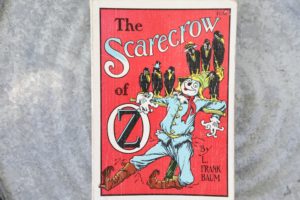
 Early in his career he wanted to become a professional musician. He started a band with a friend, agreeing their style would emulate Chicago blues. His friend discovered Bret’s interest in photography and introduced him to his father, the owner of a record company. The father was a generous man and asked Lopez to arrive for a recording session in a few days. The assignment was to shoot the album cover for jazz guitarist, Barney Kessel’s studio recording. This was the first of many albums he shot – by the time he graduated high school he recalls he had photographed seven album covers.
Early in his career he wanted to become a professional musician. He started a band with a friend, agreeing their style would emulate Chicago blues. His friend discovered Bret’s interest in photography and introduced him to his father, the owner of a record company. The father was a generous man and asked Lopez to arrive for a recording session in a few days. The assignment was to shoot the album cover for jazz guitarist, Barney Kessel’s studio recording. This was the first of many albums he shot – by the time he graduated high school he recalls he had photographed seven album covers.
Through a round about connection arranged by his sister’s best friends’ boyfriend’s brother who was managing the group, Blood Sweat and Tears, Lopez was introduced to the band members. They were fond of his photography and hired him; so after graduating high school Lopez traveled around the country with this band. Never formally trained, Lopez never followed a certain style of photography. He created his own style, based on his own perspective.
Lopez practiced professionally until 1998, building a remarkable client base of regular corporate clients including for Levi’s, Chevrolet, Coca Cola, Lexus, Cool Cigarette, a diversity of hotels, and record covers.
—
The Scarecrow property is currently planted to 25 acres of which a scant 2 acres are the remaining footprint of the original 1945 Cabernet Sauvignon plantings; these are the oldest Cabernet Sauvignon vines in Napa Valley. But diseased vines have been pulled out over the decades with much newer vines interplanted in this block. Vines that show disease or other weakness are pink tagged; if they receive a pink tag for 3 years they are replanted.
The oldest vines are permanently covered in a thick moss. As a result, Lopez has nicknamed them, ‘old men’. Their berries are remarkably well-sized, larger than many of the contemporary Cabernet Sauvignon clones growing in Napa Valley. They are known as the Cohn clone.
Can one have an emotional response to walking among old vines? Absolutely. And we know just how rare this planting is in Napa Valley. From personal experience, walking through the ‘old men’ planted at the end of World War II is a sacred and spiritual experience.
For reference other still producing Cabernet Sauvignon vines in Napa Valley are the following sites: a single acre owned by Grace Family dating to 1957, Grgich Hill’s ‘old vine’ vineyard in Yountville and MacDonald in Oakville, both with vines also dating back to the 1950s. The oldest commercially producing vineyards in Napa Valley date to the mid 1880s and are Crane Assembly in St. Helena and Canard Vineyard in Calistoga.
But on a global scale, these vines are still ‘youngsters’; the oldest commercially producing vineyard of Cabernet Sauvignon on the planet is Block 42 at the Penfolds Kalimna Vineyard in the Barossa Valley. Those vines were planted in 1888.
Other varieties at the Scarecrow estate include Merlot, Malbec, and Petit Verdot and a larger block of Cabernet Sauvignon grown from original budwood from the healthiest of the ‘old men’. All their vines are dry farmed.
—
Winemaker for Scarecrow since the inaugural vintage, Celia Welch specializes in consulting for premium wineries and is well known throughout the valley for her attention to detail and work with top vineyard sites. She has been making wine in the valley for more than 30 years and has consulted for select clients over the years including Keever, Lindstrom, and Kelly Fleming among others.
Born and raised in Medford, Oregon – her introduction to wine came early through her fathers’ passion for wine. He was a home winemaker and collector, and she grew up helping him make wine. Her first introduction to Napa Valley was in the 1960s during trips with her family. She graduated from UC Davis in 1982 with a degree B.S. degree in Fermentation Science at a time when a number of now prominent women winemakers were enrolled including Pam Starr and Heidi Peterson Barrett and others who work in Napa and beyond.
Continuing her education after graduating, she embarked in extensive travels through a number of wine regions including domestically in the Pacific Northwest, the east coast of the U.S and then New Zealand – finally working in Barossa Valley in Australia. She then moved to Napa Valley and worked at a number of wineries including Silverado Vineyards in 1987, was assistant winemaker at Robert Pepi Winery (now the home of Cardinale) and began her consulting career in 1992 for Staglin Family Winery.
Her focus of consulting is primarily for premium producers who own their own vineyards, rather than labels who source grapes and are generally (but not always) from hillside locations in Napa Valley. And her work has been highly recognized throughout the industry; in 2008 she was named Winemaker of the Year by Food and Wine Magazine and has been inducted into the Winemakers Hall of Fame through the organization, Women for Winesense.
Select Wines
 During the winemaking, Celia extracts appropriately but never crosses the line into over extraction, always achieving desired textural and tannin qualities. The tannins are already silky even by the end of fermentation. The barrels will continue to respect that in terms of the structure of the wine and are used to add complexity and density to the mid palate. But never any astringency. By the end of fermentation all the wine needs is time in oak, a gentle hand and judicious blending.
During the winemaking, Celia extracts appropriately but never crosses the line into over extraction, always achieving desired textural and tannin qualities. The tannins are already silky even by the end of fermentation. The barrels will continue to respect that in terms of the structure of the wine and are used to add complexity and density to the mid palate. But never any astringency. By the end of fermentation all the wine needs is time in oak, a gentle hand and judicious blending.
If done right, not a lot of sediment will be left in barrels prior to bottling. It is already a finished wine including color, a melding of flavors, acidity and texture and is microbial stable.
If she has paid attention during the growing season and nature has been compliant and the harvest date is right for what she is trying to create, she compares the work in the vineyard to that of a pilot who carefully lines up her approach well in advance of the runway, so that she doesn’t have to make any landing adjustments. And in winemaking, one also wants to avoid having to make corrections.
Scarecrow
The 2013 Scarecrow is deep ruby in color; sweetly fruited, the ripe bouquet offers scents of blackberry, dark cherry and dark plum with some lighter barrel influences including of dark and milk chocolate, cocoa powder, mocha and espresso. The palate is primarily dark fruited with flavors somewhat mirroring the bouquet including of blackberry jam, dark cherry, Persian mulberry and boysenberry preserve. It tastes like the fruit was harvested yesterday. Still, this bottling showcases the ripeness of the vintage. The tannins are lightly grainy and persist in tandem with loads of ripe fruit on an extended finish accompanied by a light dusty character. In Napa Valley, 2013 was a robust and sometimes tightly wound vintage right out of the gate and generally needed some time for its characteristics to become cohesive. For reference we tasted this wine 11 years post vintage. The tannins are exceptionally supple across the palate; a crowd pleaser if there ever was one, this wine is drinking in a sweet spot at this age. Regardless of vintage, texture is always an admirable hallmark of the Scarecrow wines. The palate is primarily focused on its fruit characteristics, with its oak influences a gentle companion. This wine was aged for 22 months in 100% new French oak barrels prior to bottling.
M. Étain
This is the companion label for Scarecrow; in French the name refers to Mr. Tin, another reference to a character in the Wizard of Oz. In creating the Scarecrow wine each year, lots are tasted blind, narrowed down to fewer lots and then ultimately one wine is chosen which becomes Scarecrow.
Bret asked Celia what was happening with all the wines that didn’t make the cut for Scarecrow. She told him they were being sold as bulk wine and he asked her if she would consider making another wine instead. She said she already had done so and presented him a bottle. This was the inception for M. Étain. This wine debuted in 2008 and every year is crafted from Bordeaux varieties, with Cabernet Sauvignon always leading the charge.
The 2019 M. Étain is a blend of 87% Cabernet Sauvignon, 8% Malbec, 4% Merlot and 1% Petit Verdot. This wine is deep ruby in color with an amaranthine rim; the bouquet offers an initial dried earth character, a dusty almost petrichor quality. But the fruit aromas are quickly expressed and dominate, including of blackberry, dark cherry, boysenberry and dark raspberry. And there are additional layers at play including blood orange, black olive, red chili spice, milk chocolate and vanilla. On the palate there are flavors of dark cherry, raspberry, strawberry, boysenberry preserves, blackberry and Pakistani mulberry at the peak of its ripeness. And a lingering note of cocoa powder, milk chocolate and tobacco spice on finish. Its texture is a hallmark character; this is immediately noticeable, sporting supple, velvety and finely grained tannins. Balanced, beautiful and seductive, it sports a gentle personality but also with some complexity of character. The tannins are as smooth as running ones fingers across a thick cashmere sweater. For reference we tasted this bottling 5 years post vintage. The grapes for this wine were fermented in small stainless-steel tanks and then aged in French oak barrels of which 75% were new, for a total of 17 month prior to bottling.
Toto’s Opium Dream Scene
The first commercial release of this special and very limited production bottling (200 bottles each year) was the 2016 vintage, although Scarecrow had been producing this wine previously, but only as auction lots. This wine is not produced every year – only when they have enough grapes and the quality meets their exacting expectations. The wine is bottled in a handcrafted black walnut box, featuring a mother-of-pearl poppy based on an image taken by Lopez. And each of these bottles is numbered with some of the numbers attracting a higher demand. Based on seniority of time on the mailing list, clients are offered choices of bottle numbers.
After joining the Napa Valley Vintners; Scarecrow created a special wine, not available for general sale but exclusively for the annual Napa Valley Wine trade auction. They produced 60 bottles for the 2009 Premiere Napa Valley auction; this sold for $80,000, a record at the time which doubled the previous high water mark. In 2011 at the same auction another five cases sold for $125,000.
In 2017, five cases of Toto’s Opium Dream Scene sold for $200,000. The buyer was Ichizo Nakagawa, the owner of Tokyo-based Nakaga Wine Company. Nakagawa has been one of Scarecrow’s most ardent supporters and has helped spread brand awareness throughout Asia. And bottle No 1 of the 2016 vintage of Toto’s Opium Dream Scene was auctioned off in 2023 at the annual Napa Valley Grapegrowers Stomp auction; this wine was rated a perfect 100 points by the Wine Advocate.
No wines were produced from the 2020 vintage due to the resulting smoke from the Glass Fire.
—
Production has increased over the years; today a large vintage is about 2,000 cases of Scarecrow and 2,000 cases of M. Étain. The wines are primarily sold through a mailing list; as of our latest update to this review, the wait time to become a member is approximately 4 years.
The wines are also selectively distributed; when looking for a distributor, Lopez kept hearing about Kimberly Jones. So he called up Wally’s Wine in Beverly Hills and talked to their buyer, mentioning he was considering Jones to represent the wines. Lopez told the buyers, “I hear she is the number one distributor in California.” The buyer responded by saying, “yes she is number one, but she is also number two, three and four”.
While the wines rightly garner all the acclaim, a variety of other related items are sold through the website including the Scarecrow book, prints by Lopez, and other coveted accessories. For more information and to join the mailing list for access to the next release of M. Etain and to be added to the wait list for the Scarecrow wines, visit: www.scarecrowwine.com







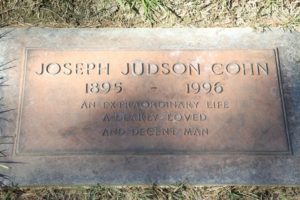
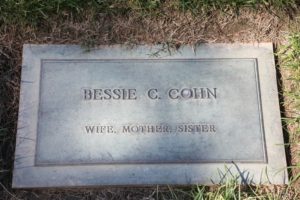


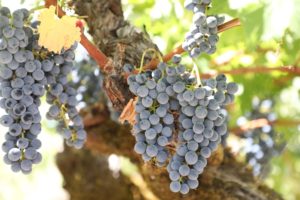
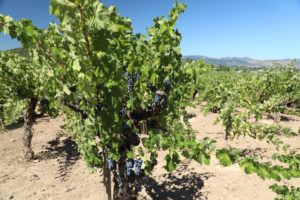
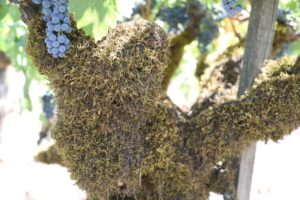
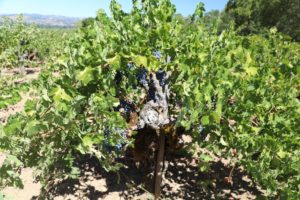
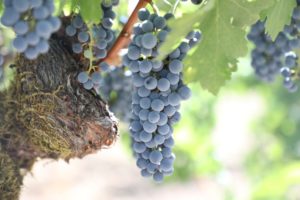
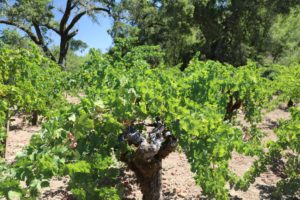
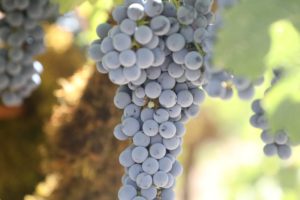
Leave a Reply